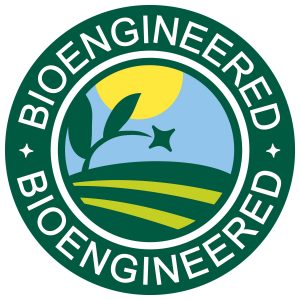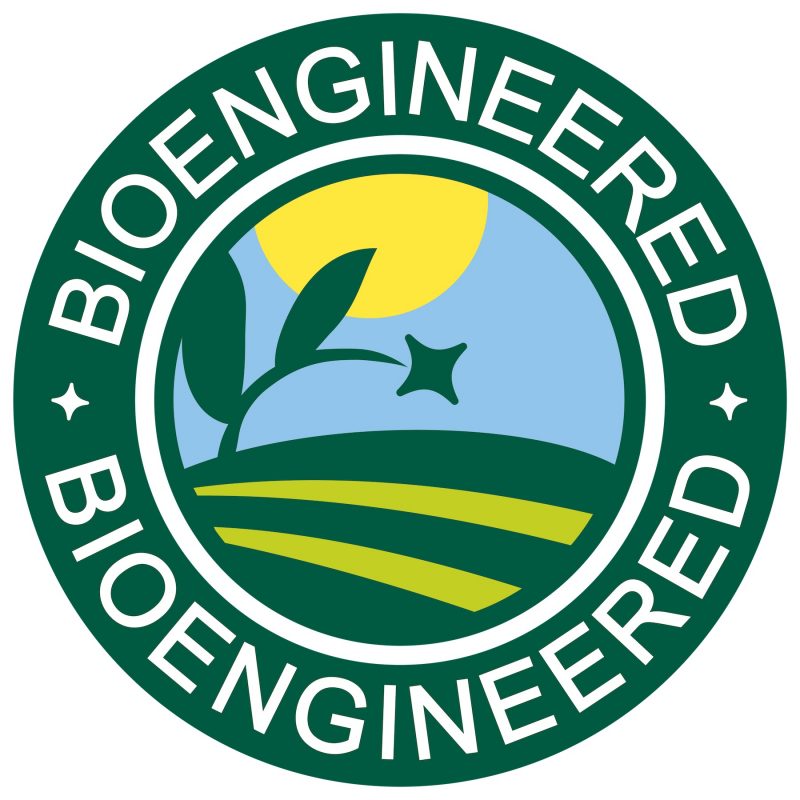Average shoppers likely to be bewildered at complexity of new GMO labeling law
On January 1, 2022, the federal Bioengineered (BE) Food labeling law will take full effect. Under the BE labeling law, certain food products that are made with GMOs will require a disclosure of bioengineered ingredients.
The BE labeling law, known formally as the National Bioengineered Food Disclosure Standard or NBFDS, was introduced in 2016 as a federal response to state-level GMO labeling campaigns. However, this law is not nearly as comprehensive as either the state laws it is meant to replace nor the Non-GMO Project Standard. With a comparatively limited scope, categorical exemptions and inconsistent labeling requirements, the BE labeling law is insufficient to protect a consumer’s right to know what’s in their food.
Bioengineered, or “BE” for short, is the federal government’s new term for GMOs. Under the Bioengineered Food labeling law, certain BE foods containing detectable modified genetic material must disclose the presence of BE ingredients.
The clause “detectible modified genetic material” is crucial because it excuses many products that are made with GMOs from making the disclosure. Many products made with new GMO techniques such as CRISPR, TALEN, and RNAi are currently untestable. Without a commercially available test, the modified genetic material is undetectable and thus those foods wouldn’t require a BE label.
Additionally, many processed foods contain highly refined ingredients made from GMOs. The processing often leaves no detectable modified genetic material behind in the final product, and therefore those products also will not require labels. Common household products that contain ingredients such as sugar made from GMO sugar beets or cooking oil made from GMO canola would fall into this category.
Certain food containing detectable modified genetic material will require a Bioengineered (BE) Food disclosure. The USDA’s current List of Bioengineered Foods includes:
- Alfalfa
- Arctic™ Apple
- Canola
- Corn
- Cotton
- Bt Eggplant
- Ringspot virus-resistant Papaya
- Pink Pineapple
- Potato
- AquAdvantage® Salmon
- Soybean
- Summer squash
- Sugarbeet
This list determines which foods are considered bioengineered in their most basic, raw form. However, the way the BE law is written—with exemptions, loopholes and technical limitations—many products made from these bioengineered ingredients will not require a disclosure.
- Animal feed, pet food and personal care products are all exempt from the BE labeling law.
- Some foods for direct human consumption are also exempt, such as meat, poultry, and eggs.
- Multi-ingredient products in which meat, poultry or eggs are the first ingredient listed are exempt *even if other ingredients with detectable modified genetic material are included in the product. *
The USDA explained how this rule might impact labeling, using a can of pork stew as an example. A multi-ingredient canned stew might contain bioengineered ingredients such as sweet corn. If pork is the predominant ingredient listed first on the ingredient panel, the product would not be subject to the BE labeling law. If the stew lists water, broth or stock as the first ingredient and pork appears second on the ingredient panel, the product would not require a BE label—even if the third ingredient was GMO corn (that’s because water, stock, and broth are overlooked). However, if the stew contains more corn than pork, the ingredient panel will list corn first and a disclosure would be necessary.
The average shopper would be bewildered at this level of complexity. The USDA’s example demonstrates the confusion built into the BE labeling law. A multi-ingredient product may or may not be labeled “Containing Bioengineered Food Ingredients” not based on the presence of bioengineered ingredients but on the order in which the ingredients are listed.
The BE labeling law was written in response to a series of state-level labeling initiatives for GMO labeling, after 20 years of widespread consumer demand for increased transparency in the food system.
Yet, when this level of detailed knowledge about the regulation is necessary for the average shopper to assess whether the product they are about to buy might contain bioengineered ingredients, the regulation does not fulfill its purpose.
What will the bioengineered food label look like on packaging?
The USDA has provided several options for what the Bioengineered (BE) Food disclosure can look like on packaging. It’s up to the companies to decide which they’d like to use.
This is a disservice to shoppers. Consistency is essential to the success of any information campaign. Consistency with language, and consistency with labels. The visual component of the BE labeling law is just as important as the words. What will BE food labels look like across products?

There are several options, including:
- BE Symbol—The USDA Agricultural Marketing Service developed these new symbols for the BE labeling law.
- Text disclosure—The product package can display a simple text disclosure such as “Bioengineered food” or “Contains a bioengineered food ingredient.” This option relies on the unfamiliar term “bioengineered” and doesn’t explain what bioengineered means or where the consumer could find more information, which may be confusing.
- Text message or contact phone number—Brands may opt to display the phrase, “*Text [number] for bioengineered food information” *on the package, or “Call [phone number] for more food information,” with a pre-recorded message.
- QR code or other scannable code—Brands may provide the code along with the text, “Scan here for more food information.” However, disclosures that rely exclusively on digital devices can be discriminatory, creating barriers to information based on geography, income, or age.
- URL—Very small manufacturers are permitted to direct consumers to their website for information.
Look for the Butterfly to keep GMOs out of your shopping cart
and out of agriculture
The majority of consumers concerned about GMOs seek to avoid them, not find products that contain them. The Bioengineered Food labeling law is ineffective at finding GMOs and avoiding GMOs, largely because of restrictions, loopholes, and exemptions. Too much falls outside of the law’s purview for it to be effective. That’s why the Butterfly remains the most rigorous, transparent, and trustworthy label for GMO avoidance.
The Non-GMO Project Butterfly does more than keep GMOs out of your shopping cart. The Non-GMO Project Product Verification Program (PVP) also works to preserve and build our non-GMO food supply. The PVP applies pressure at the most significant points in our food supply by looking back through the supply chain to evaluate raw ingredients and animal feed. GMOs grow on more than 200 million acres of agricultural land in the U.S.—and most of those crops end up in animal feed. By evaluating our food *and *our food’s food, the PVP substantially supports a non-GMO food supply. Planting vast areas with just a few crops erodes biodiversity, while the chemical pesticides that go hand in hand with GMOs damage soil health. Agriculture that relies on GMOs is a losing proposition.
Disclosing whether the products consumers buy for our families contain “detectable modified genetic material” is simply not enough to preserve environmental health and ecological harmony for future generations. The Non-GMO Project agrees with the 65% of consumers who believe GMO labeling should be mandatory. Labeling should be meaningful, consistent, and transparent—effectively supporting everyone’s right to know what goes into their food.
*Source: Organic and Beyond 2020 GMO Special Report; The Hartman Group, Inc.
Source: Non-GMO Project
To view source article, visit:
https://www.nongmoproject.org/blog/what-is-bioengineered-food/
Organic & Non-GMO Insights December 2021









